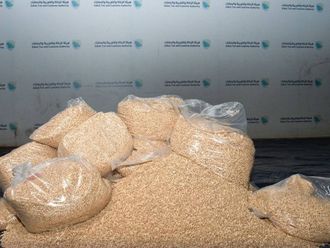Most traditional ornaments worn by Keralite women
have cultural and religious significance
The Indian custom of wearing jewellery can be traced back about 5,000 years. Each state has its own traditional jewellery, which again varies among the numerous communities and castes.
In spite of the fad about international designs, particular traditional ornaments are worn for certain festivals and rituals to this day.
Most traditional mothirams (finger rings) worn by Keralite women have cultural and religious significance. For instance, the pavithramothiram is believed to possess divine energy.
The power of the ring lies in the eight-shaped knot twined in the centre of the circlet. It should be worn on the right ring finger because it is said that the pingala nerve, which represents solar disc, lies there and, therefore, the ring purges the wearer of all sins.
Similarly, navaratna rings - comprising nine planetary gems - is said to bring in happiness, prosperity and long life, while anavaalmothiram (elephant hair ring) is supposed to keep away misfortune.
Lakshmi mothiram and earrings are used for religious purposes. Lakshmi being the Goddess of wealth, Lakshmi ornaments are considered the most auspicious gifts given on Diwali.
Meanwhile, finger rings and earrings, such as elakkathali, palakka, poothali, mullamottu, vangimothiram, pathakam, nagapadam etc., are usually worn for weddings or cultural events.
Jimiki - the bell-shaped earring - is still popular with traditional wear, while manikyamothiram or ruby finger ring is considered an elegant and sophisticated piece.













